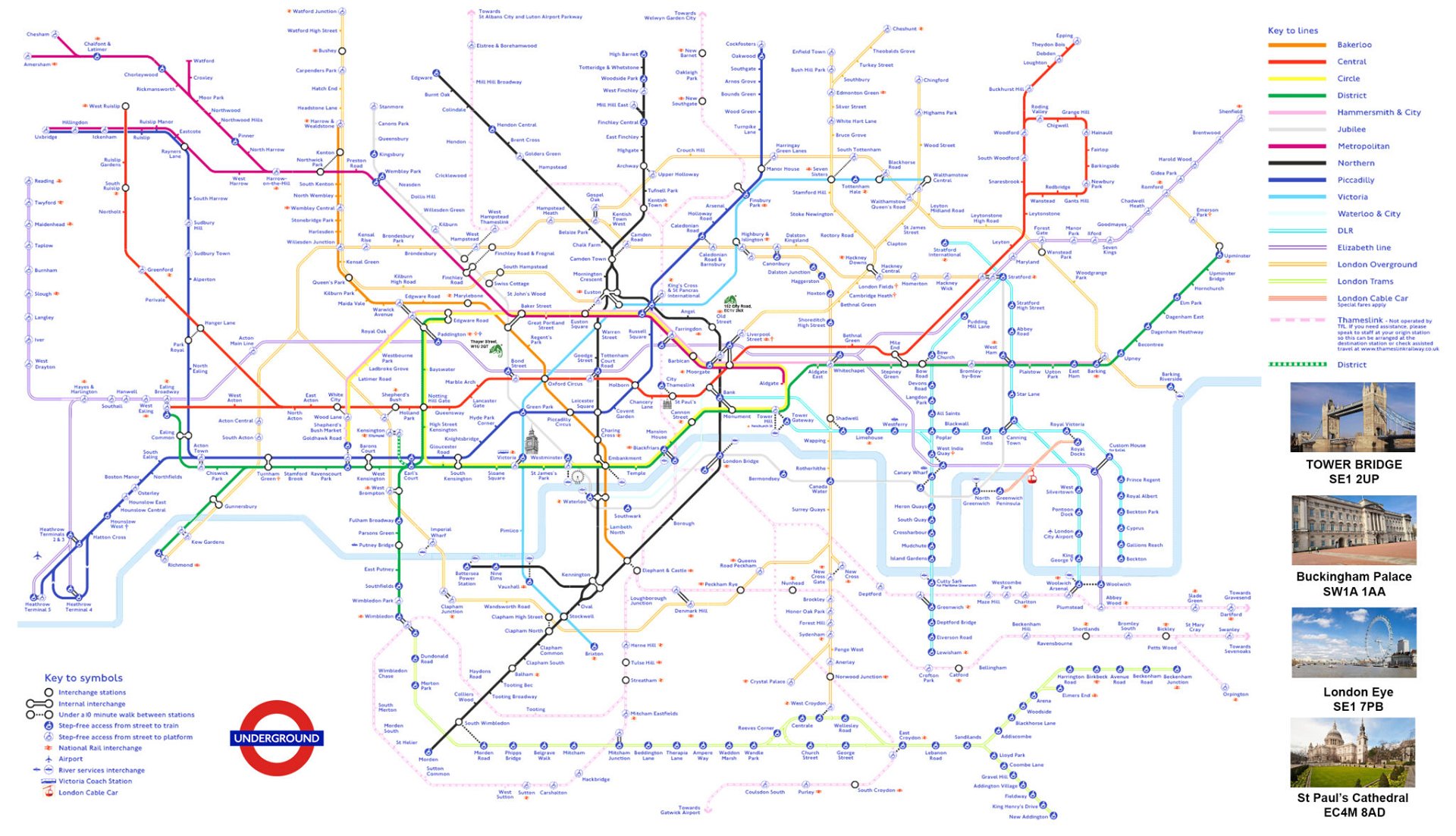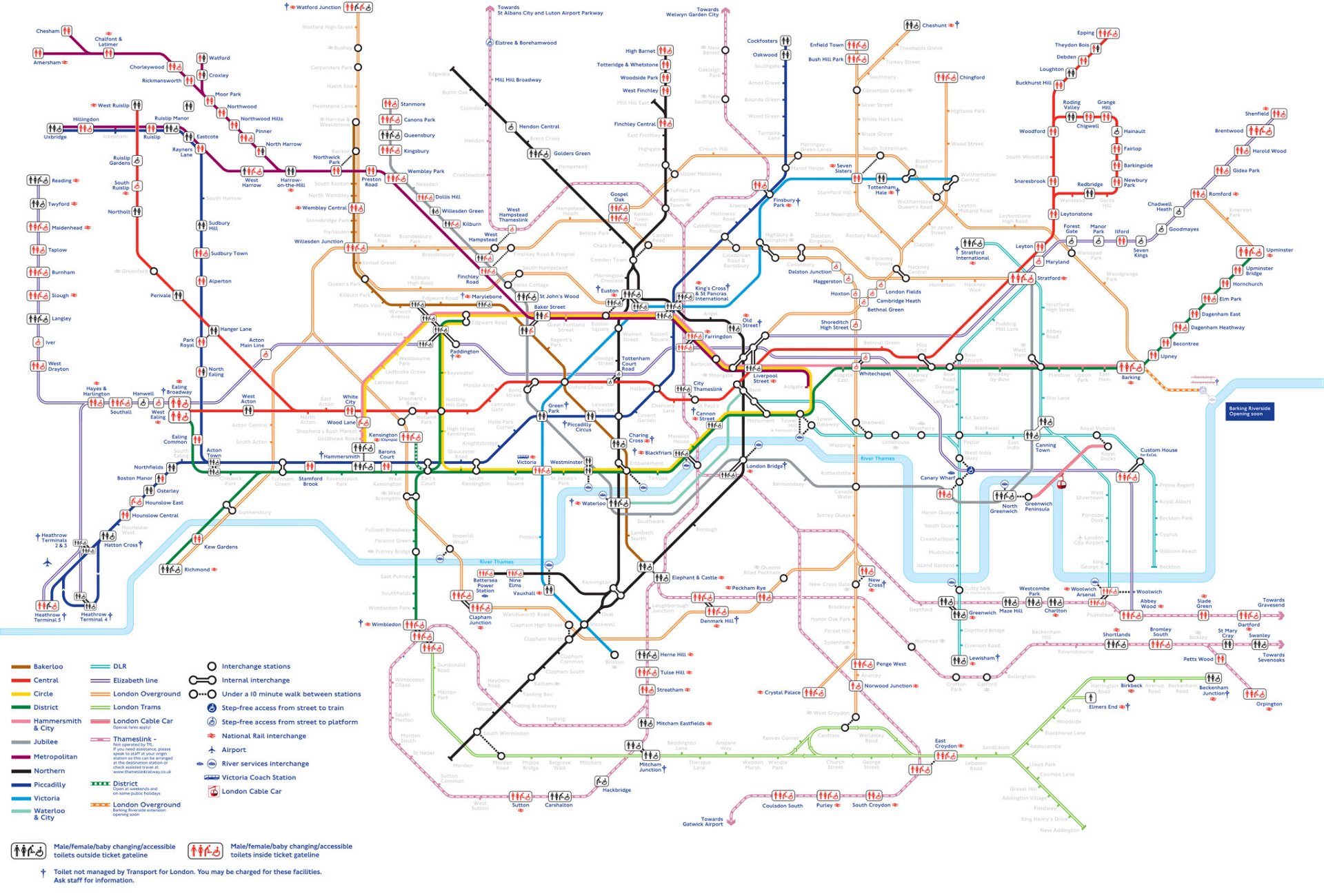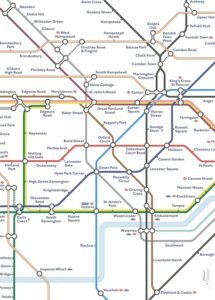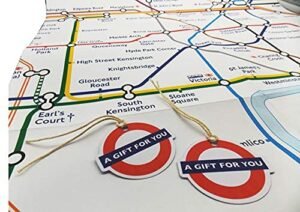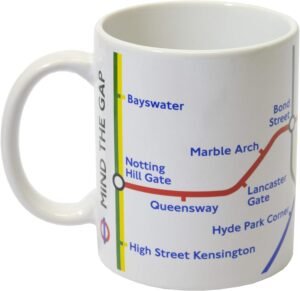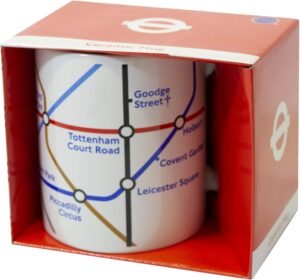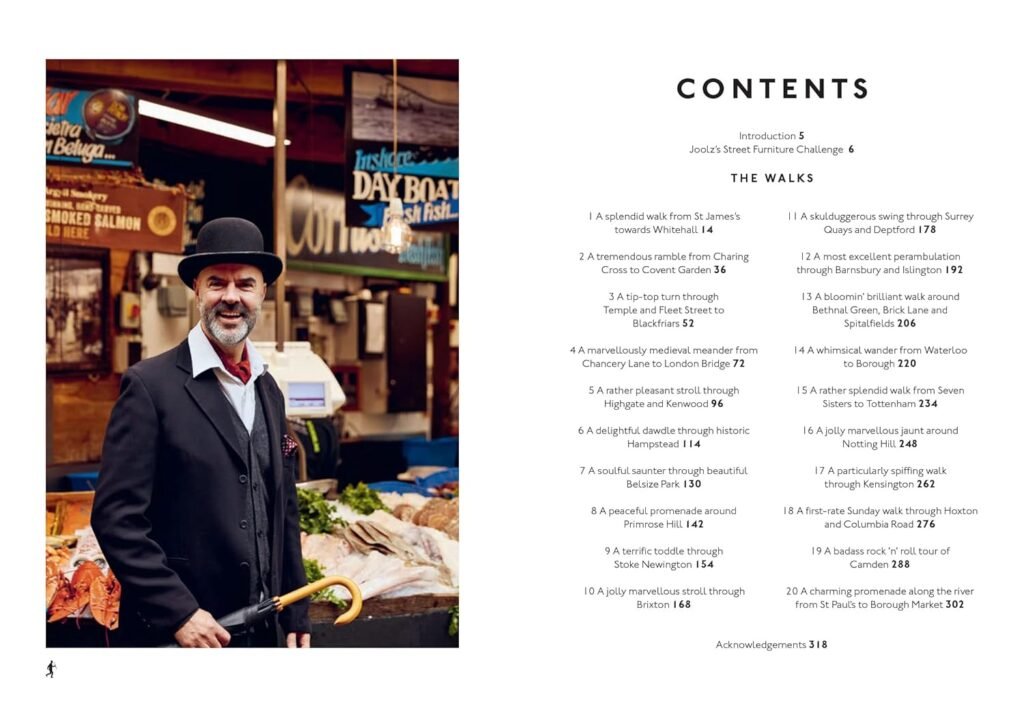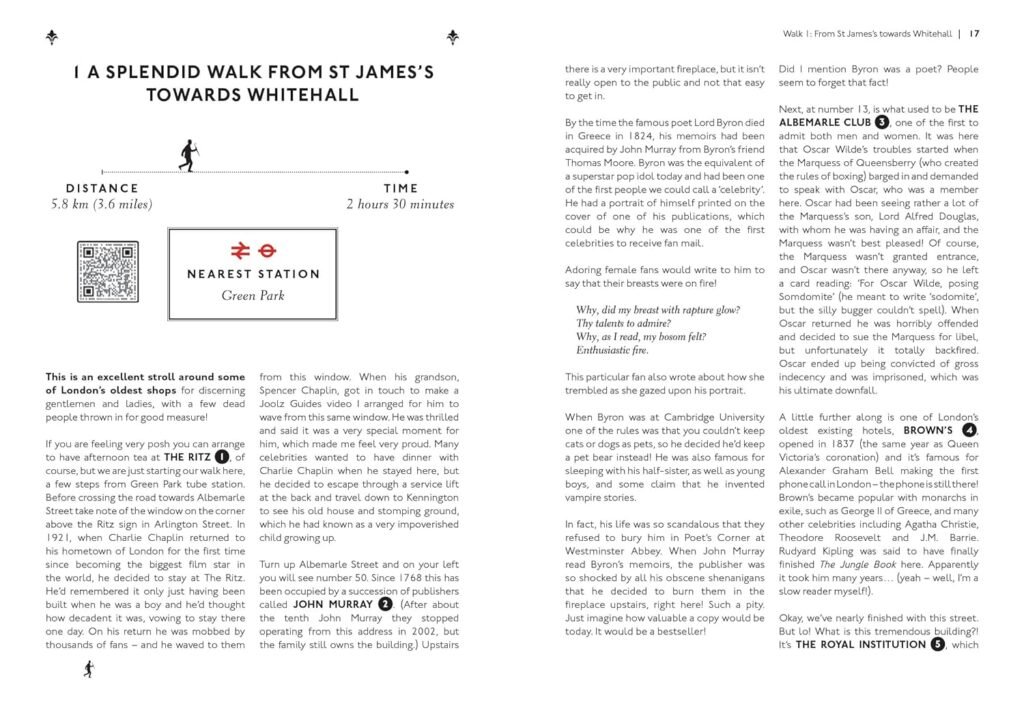Navigating London with Tube Maps:
Getting around London has never been easier, thanks to the extensive network of the London Underground, affectionately known as the Tube. The Tube Maps provided on this webpage offer a comprehensive guide to navigating the city's underground rail system, ensuring you reach your desired destination quickly and efficiently.
Key Benefits of Using London Tube Maps:
- Efficiency: The Tube Maps allow you to plan your journey in advance, minimizing travel time and maximizing sightseeing opportunities.
- Accessibility: With stations located throughout the city, the London Underground provides easy access to all major attractions and points of interest.
- Reliability: Enjoy peace of mind knowing that the Tube operates regularly and reliably, allowing you to explore London at your own pace.
- Affordability: Traveling by the Tube is a cost-effective way to navigate the city, with a range of ticket options to suit every budget.
- Convenience: Whether you're a first-time visitor or a seasoned Londoner, the Tube Maps are user-friendly and intuitive, making navigation a breeze.
So why wait? Start planning your unforgettable London adventure today and let the London Tube Maps on this webpage be your guide to discovering all that this incredible city has to offer.
London Tube TOILET Map and Zones 2023
London Underground Tube Stations
The London Underground Tube Lines stand as the arterial pathways of the city's vast transportation network, crisscrossing beneath its streets and landmarks to form an intricate web of connectivity. With a total of 11 lines spanning over 400 kilometers, each line possesses its own distinct character and significance, playing a crucial role in the daily lives of millions of commuters, tourists, and residents who rely on its services.
The Central Line, often referred to as the "red line," epitomizes the vibrant pulse of London's urban core. Stretching from east to west, it intersects with key destinations such as Oxford Street, home to renowned shopping districts and cultural hotspots. Its efficient service and frequent trains make it a lifeline for those navigating the bustling heart of the city, ensuring swift connections between business districts, entertainment venues, and residential neighborhoods.
In contrast, the District Line offers a scenic journey through some of London's most picturesque landscapes. Traversing leafy suburbs and riverside communities, it provides access to charming locales like Kew Gardens and Richmond, offering commuters a refreshing escape from the urban hustle and bustle. With its distinctive green livery and tranquil ambiance, the District Line embodies the quieter, more serene side of London living.
Meanwhile, the Jubilee Line embodies the modern face of London, connecting iconic landmarks such as the O2 Arena and Canary Wharf with its sleek, futuristic trains. Serving as a vital link between East and West London, it symbolizes the city's relentless march towards progress and innovation. Its stations, characterized by their contemporary architecture and state-of-the-art facilities, reflect the dynamic spirit of a metropolis at the forefront of global commerce and culture.
Venturing further afield, the Metropolitan Line offers a gateway to London's historic past, tracing its roots back to the Victorian era. With stations steeped in heritage and charm, it provides access to architectural marvels like St. Pancras International and Baker Street, immortalized in the tales of Sherlock Holmes. Its distinctive maroon livery and ornate station designs evoke a sense of nostalgia, inviting passengers to embark on a journey through time.
From the vibrant colors of the Piccadilly Line to the bustling energy of the Northern Line, each Tube line tells its own unique story, weaving together the fabric of London's rich tapestry. Whether you're a seasoned commuter navigating the daily grind or a wide-eyed tourist embarking on a sightseeing adventure, the London Underground Tube Lines offer a seamless and efficient means of travel, connecting people and places across the sprawling metropolis with unparalleled ease.

Bakerloo
Elephant & Castle
Lambeth North
Waterloo
Embankment
Charing Cross
Piccadilly Circus
Oxford Circus
Regent's Park
Baker Street
Marylebone
Edgware Road Bakerloo
Paddington
Warwick Avenue
Maida Vale
Kilburn Park
Queen's Park
Kensal Green
Willesden Junction
Harlesden
Stonebridge Park
Wembley Central
North Wembley
South Kenton
Kenton
Harrow & Wealdstone

Central
Epping
Theydon Bois
Debden
Loughton
Hainault
Grange Hill
Chigwell
Buckhurst Hill
Roding Valley
Woodford
South Woodford
Snaresbrook
Leytonstone
Leyton
Stratford
Mile End
Bethnal Green
Liverpool Street Underground
Bank
St Paul's
Chancery Lane
Holborn
Tottenham Court Road
Oxford Circus
Bond Street
Marble Arch
Lancaster Gate
Queensway
Notting Hill Gate
Holland Park
Shepherd's Bush
White City
East Acton
North Acton
West Acton
Ealing Broadway

Circle
Acton Town
Chiswick Park
Turnham Green
Stamford Brook
Ravenscourt Park
Hammersmith
Goldhawk Road
Hammersmith
Barons Court
West Kensington
Shepherd's Bush Market
Wood Lane
Latimer Road
Ladbroke Grove
Westbourne Park
Royal Oak
Paddington
Earl's Court
Baker Street
Great Portland Street
Euston Square
Temple
Edgware Road Circle Line
Liverpool Street Underground
High Street Kensington
Notting Hill Gate
Barbican
Moorgate
Bromley-By-Bow
Upton Park
Mile End
West Ham
Bow Road
Whitechapel
Aldgate East
Stepney Green
Tower Hill
Monument
Mansion House
Blackfriars
Victoria
Bayswater
Paddington
King's Cross St. Pancras
Farringdon
Plaistow
East Ham
Barking
Aldgate
Cannon Street
Embankment
Westminster
St James's Park
Sloane Square
South Kensington
Gloucester Road

District
Ealing Broadway
Ealing Common
Acton Town
Chiswick Park
Turnham Green
Stamford Brook
Ravenscourt Park
Hammersmith
Barons Court
West Kensington
Wimbledon
Wimbledon Park
Southfields
East Putney
Putney Bridge
Parsons Green
Fulham Broadway
West Brompton
Kensington (Olympia)
Earl's Court
High Street Kensington
Notting Hill Gate
Bayswater
Paddington
Edgware Road Circle Line

Hammersmith & City
Hammersmith
Goldhawk Road
Shepherd's Bush Market
Wood Lane
Latimer Road
Ladbroke Grove
Westbourne Park
Royal Oak
Paddington
Edgware Road Circle Line
Baker Street
Great Portland Street
Euston Square
King's Cross St. Pancras
Farringdon
Barbican
Moorgate
Liverpool Street Underground
Aldgate East
Whitechapel
Stepney Green
Mile End
Bow Road
Bromley-By-Bow
West Ham
Plaistow
Upton Park
East Ham
Barking
Upney
Becontree
Dagenham Heathway
Dagenham East
Elm Park
Hornchurch
Upminster Bridge
Upminster

Jubilee
Stanmore
Canons Park
Queensbury
Kingsbury
Wembley Park
Neasden
Dollis Hill
Willesden Green
Kilburn
West Hampstead
Finchley Road
Swiss Cottage
St John's Wood
Baker Street
Bond Street
Green Park
Westminster
Waterloo
Southwark
London Bridge
Bermondsey
Canada Water
Canary Wharf
North Greenwich
Canning Town
West Ham
Stratford

Metropolitan
Amersham
Chalfont & Latimer
Chorleywood
Rickmansworth
Moor Park
Northwood
Northwood Hills
Pinner
North Harrow
Harrow-On-The-Hill
Northwick Park
Preston Road
Wembley Park
Finchley Road
Baker Street
Great Portland Street
Euston Square
King's Cross St. Pancras
Farringdon
Barbican
Moorgate
Liverpool Street Underground
Aldgate

Northern
Morden
South Wimbledon
Colliers Wood
Tooting Broadway
Tooting Bec
Balham Underground
Clapham South
Clapham Common
Clapham North
Stockwell
Oval
Kennington
Elephant & Castle
Borough
London Bridge
Bank
Moorgate
Old Street
Waterloo
Embankment
Charing Cross
Leicester Square
Tottenham Court Road
Goodge Street
Warren Street
Angel
King's Cross St. Pancras
Euston Station
Mornington Crescent
Camden Town
Chalk Farm
Belsize Park
Hampstead
Golders Green
Brent Cross
Hendon Central
Colindale
Burnt Oak
Edgware

Piccadilly
Cockfosters
Oakwood
Southgate
Arnos Grove
Bounds Green
Wood Green
Turnpike Lane
Manor House
Finsbury Park
Arsenal
Holloway Road
Caledonian Road
King's Cross St. Pancras
Russell Square
Holborn
Covent Garden
Leicester Square
Piccadilly Circus
Green Park
Hyde Park Corner
Knightsbridge
South Kensington
Gloucester Road
Earl's Court
Barons Court
Hammersmith
Turnham Green
Acton Town
South Ealing
Northfields
Boston Manor
Osterley
Hounslow East
Hounslow Central
Hounslow West
Hatton Cross
Heathrow Terminal 4
Heathrow Terminals 1,2,3

Victoria
Brixton
Stockwell
Vauxhall
Pimlico
Victoria
Green Park
Oxford Circus
Warren Street
Euston Station
King's Cross St. Pancras
Highbury & Islington
Finsbury Park
Seven Sisters
Tottenham Hale
Blackhorse Road
Walthamstow Central

Waterloo & City
Waterloo
Bank
Top Sight Seeing Landmarks Of London 2023
Tower Bridge, an iconic symbol of London, stands as a majestic testament to the city's rich history and architectural prowess. Spanning the River Thames with its unmistakable twin towers and intricate Victorian Gothic design, it is not just a bridge but a celebrated landmark that has captivated the imagination of visitors from around the world.
Constructed over a century ago and officially opened in 1894, Tower Bridge was hailed as a marvel of engineering innovation, featuring a movable bascule mechanism that allows it to open and close to accommodate passing ships. This blend of form and function has made it not only a vital transportation link but also a beloved cultural icon.
As one of the most recognizable sights in London, Tower Bridge offers breathtaking views from both its upper walkways and the glass-floored high-level walkways, providing visitors with unparalleled perspectives of the city skyline and the bustling river below. Its imposing presence, especially when illuminated against the night sky, creates a mesmerizing spectacle that leaves a lasting impression on all who behold it.
Beyond its architectural grandeur, Tower Bridge is steeped in history, having witnessed significant events throughout the years, from royal processions to wartime resilience. Its exhibitions delve into these rich narratives, offering insights into the bridge's construction, operation, and the stories of those who have traversed its spans.
Today, Tower Bridge continues to serve as a vital artery of London's transportation network, facilitating the flow of traffic and pedestrians across the River Thames while also serving as a symbol of the city's enduring spirit and resilience. Whether admired from afar or experienced up close, Tower Bridge stands as an enduring symbol of London's past, present, and future, a timeless icon that continues to inspire awe and wonder in all who encounter it.
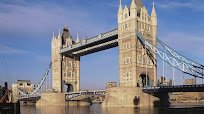
The main entrance to visit Tower Bridge is located at the base of the North West Tower.
Nearest Tube Station To Tower Bridge London is Tower Hill station and it is a seven minute walk from Tower Bridge.
It can be can be accessed from the District, and Circle lines. It has step-free access from platform to street.
Buses
The following bus routes will take you to Tower Bridge: 15, 42, 78,100, 343.
Buckingham Palace, the majestic residence of the British monarch in the heart of London, stands as an enduring symbol of royal grandeur and tradition. With its iconic facade, sprawling gardens, and rich history, it is not just a palace but a cherished emblem of the British monarchy and a must-see destination for visitors from around the globe.
Originally built in 1703 as a townhouse for the Duke of Buckingham, the palace was later acquired by King George III in 1761 as a private residence for the royal family. Since then, it has undergone numerous expansions and renovations, evolving into the magnificent structure we know today.
At the heart of Buckingham Palace is the State Rooms, a series of opulent chambers used for official ceremonies and receptions. Visitors can marvel at the lavish interiors adorned with priceless works of art, intricate furnishings, and dazzling chandeliers, offering a glimpse into the world of royalty.
One of the highlights of any visit to Buckingham Palace is witnessing the Changing of the Guard ceremony, a centuries-old tradition that takes place daily during the summer months and on alternate days during the rest of the year. Accompanied by stirring military music, this spectacle attracts crowds of spectators eager to witness the precision and pageantry of the guards as they perform their ceremonial duties.
Surrounding the palace are the sprawling Buckingham Palace Gardens, a tranquil oasis of greenery in the heart of bustling London. Spanning 40 acres, these meticulously landscaped gardens feature lush lawns, serene lakes, and vibrant flower beds, providing a peaceful retreat for both visitors and royalty alike.
While Buckingham Palace serves as the official residence and administrative headquarters of the monarch, it also plays a significant role in the cultural life of the nation. The palace hosts a variety of events, including state banquets, royal receptions, and garden parties, showcasing the splendor and heritage of the British monarchy to the world.
In addition to its ceremonial and administrative functions, Buckingham Palace is also a symbol of continuity and tradition, serving as a focal point for national celebrations and milestones. From royal weddings and jubilees to moments of remembrance and reflection, the palace stands as a steadfast symbol of unity and pride for the British people.
In summary, Buckingham Palace is not just a historic residence; it is a living embodiment of Britain's rich heritage and royal legacy. With its grandeur, history, and cultural significance, it continues to capture the imagination of visitors and inspire awe and admiration for generations to come.

The Green Park Tube Station is the nearest to Buckingham Palace. St James’s Park, in the City of Westminster is just 0.4 miles away.
Victoria is another station within walking distance to Buckingham Palace, 0.5 miles.
St. Paul's Cathedral, an architectural masterpiece nestled in the heart of London, stands as a beacon of spiritual solace, artistic excellence, and historical significance. With its iconic dome dominating the city skyline, it is not only a place of worship but also a symbol of resilience and renewal that has endured for centuries.
Designed by the renowned architect Sir Christopher Wren in the aftermath of the Great Fire of London in 1666, St. Paul's Cathedral is a testament to human ingenuity and creativity. Its magnificent Baroque-style architecture, characterized by its majestic dome and elegant facades, showcases Wren's mastery of form and proportion, earning it a place among the most iconic landmarks in the world.
Stepping inside St. Paul's Cathedral, visitors are greeted by a sanctuary of serenity and beauty. The awe-inspiring interior, bathed in the warm glow of stained glass windows and ornate decorations, invites contemplation and reflection. From the intricately carved woodwork of the choir stalls to the majestic organ with its soaring melodies, every corner of the cathedral exudes a sense of reverence and reverence.
One of the most striking features of St. Paul's Cathedral is its magnificent dome, which rises majestically above the city skyline, offering panoramic views of London from its golden gallery. Climbing the 528 steps to the top, visitors are rewarded with breathtaking vistas of the Thames River, the sprawling metropolis below, and the distant horizon beyond.
In addition to its architectural splendor, St. Paul's Cathedral is steeped in history and tradition. It has borne witness to numerous significant events, from royal weddings and state funerals to moments of national celebration and mourning. Its illustrious past is reflected in the memorials and monuments that adorn its walls, paying tribute to the heroes and luminaries who have shaped Britain's destiny.
Beyond its role as a place of worship, St. Paul's Cathedral serves as a cultural and educational hub, hosting concerts, exhibitions, and educational programs that celebrate the arts, history, and spirituality. Its commitment to inclusivity and community engagement ensures that it remains a vibrant and welcoming space for people of all backgrounds and beliefs.
In summary, St. Paul's Cathedral is more than just a building; it is a living embodiment of London's rich heritage and enduring spirit. With its timeless beauty, historical significance, and spiritual resonance, it continues to inspire and uplift all who enter its hallowed halls, reminding us of the power of faith, art, and human resilience in the face of adversity.
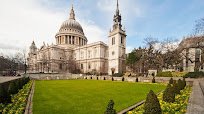
- 3 minutes from St Paul’s Underground station.
- 4 minutes from City Thameslink station.
- 7 minutes from Blackfriars Underground and train station.
Bus
Routes 4, 8, 11, 15, 17, 23, 25, 26, 56, 76, 100, 172, 242, 521 all stop near the Cathedral.
All the major ‘hop on, hop off’ sightseeing bus tours stop outside the Cathedral.
The London Eye, an iconic landmark on the banks of the River Thames, stands as a testament to modern engineering and offers unparalleled views of the bustling cityscape. As one of the world's tallest observation wheels, it has become a symbol of London's vibrant spirit and a must-visit attraction for tourists from around the globe.
Standing at an impressive height of 135 meters (443 feet), the London Eye offers visitors a unique vantage point from which to admire the city's iconic landmarks, including the Houses of Parliament, Big Ben, St. Paul's Cathedral, and Buckingham Palace. Its glass-enclosed capsules provide panoramic views of London's ever-changing skyline, offering a bird's-eye perspective of the bustling streets below.
Originally conceived as a temporary structure to celebrate the turn of the millennium, the London Eye quickly captured the imagination of the public and has since become a permanent fixture on the city's skyline. Its sleek, modern design, coupled with its breathtaking views and smooth rotation, has made it one of the most popular tourist attractions in the world, welcoming millions of visitors each year.
Beyond its role as a tourist attraction, the London Eye has also become a symbol of celebration and unity, hosting countless special events, proposals, and even weddings in its iconic capsules. Its annual New Year's Eve fireworks display is a highlight of the city's festive calendar, drawing crowds from far and wide to witness the spectacular pyrotechnic show against the backdrop of the illuminated wheel.
In addition to its daytime vistas, the London Eye offers a magical experience after dark, when the city is bathed in the warm glow of streetlights and illuminated landmarks. Nighttime rides on the wheel provide a romantic and enchanting way to see London from above, with twinkling lights stretching as far as the eye can see.
With its striking silhouette and mesmerizing views, the London Eye continues to captivate visitors and locals alike, offering a unique perspective on one of the world's most dynamic cities. Whether enjoyed as a leisurely sightseeing experience or as part of a special occasion, a ride on the London Eye is sure to leave a lasting impression and create cherished memories for years to come.
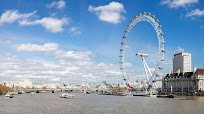
The London Eye is located within easy walking distance from several London Underground stations: Waterloo, Embankment, Charing Cross and Westminster.
Waterloo is the closest tube station to the London Eye. Waterloo is about five minutes walking distance. Exit the station following signs for the South Bank.
Embankment and Charing Cross stations are close together on the north side of the River Thames. Both tube stations are a ten-fifteen minute walk to reach the London Eye. From the station, cross over Hungerford Bridge
The Tower of London, steeped in nearly a thousand years of history, stands as an iconic symbol of power, intrigue, and resilience. Nestled on the banks of the River Thames, this imposing fortress has witnessed centuries of drama, from royal ceremonies and political intrigue to imprisonment, torture, and execution.
Originally built by William the Conqueror in 1066 as a symbol of Norman rule, the Tower of London has served variously as a royal palace, a prison, a treasury, and a fortress. Its formidable walls and imposing towers have weathered countless sieges and attacks, earning it a fearsome reputation as a stronghold of royal authority and a place of terror for those who dared to defy it.
One of the Tower's most famous residents was Anne Boleyn, the second wife of King Henry VIII, who was imprisoned within its walls and later executed on charges of treason. Her tragic story is just one of many that have left their mark on the Tower's history, making it a site of both fascination and intrigue for visitors from around the world.
Today, the Tower of London stands as a UNESCO World Heritage Site and one of London's most popular tourist attractions, drawing millions of visitors each year to explore its ancient walls, stunning architecture, and priceless treasures. Highlights include the dazzling Crown Jewels, housed in the Jewel House, which showcase centuries of regal splendor and craftsmanship.
Visitors can also discover the Tower's dark and tumultuous past through interactive exhibits, guided tours, and reenactments led by the Yeoman Warders, also known as Beefeaters. These iconic guardians of the Tower offer insight into its rich history, regaling visitors with tales of royal intrigue, daring escapes, and ghostly sightings that have become the stuff of legend.
In addition to its historical significance, the Tower of London remains an active working fortress, home to the Yeoman Warders, the resident ravens, and the ceremonial regalia of the British monarchy. Its imposing presence continues to inspire awe and reverence, serving as a poignant reminder of London's medieval past and its enduring legacy as a seat of power and authority.
Whether admired from afar or explored up close, the Tower of London offers a captivating journey through the annals of British history, inviting visitors to step back in time and uncover the secrets and stories that lie within its ancient walls.

- Tube: The closest tube station is Tower Hill (Circle and District lines)
- Bus: Bus lines 15, 42, 78, 100, and RV1 will stop at the Tower of London
Westminster Abbey, a jewel of Gothic architecture nestled in the heart of London, stands as a living testament to centuries of British history, culture, and spirituality. With its soaring spires, intricate carvings, and majestic interior, it is not only a place of worship but also a revered symbol of national identity and heritage.
Dating back over a thousand years, Westminster Abbey has been the site of coronations, royal weddings, and state funerals, making it one of the most significant religious and ceremonial venues in the United Kingdom. Its rich history is woven into the fabric of the nation, with monarchs, statesmen, poets, and musicians interred within its hallowed walls.
One of the most iconic features of Westminster Abbey is its stunning Gothic architecture, characterized by its pointed arches, ribbed vaults, and elaborate stained glass windows. The intricately carved facade and soaring towers offer a breathtaking first impression, while the majestic interior, adorned with ornate tombs, memorials, and monuments, provides a serene sanctuary for reflection and prayer.
Visitors to Westminster Abbey can explore its historic nave, chapels, and cloisters, marveling at the exquisite craftsmanship and artistry on display. Highlights include the Coronation Chair, the Poets' Corner, and the Tomb of the Unknown Warrior, each offering a glimpse into the Abbey's illustrious past and the lives of those who have shaped British history.
In addition to its architectural splendor, Westminster Abbey is renowned for its rich musical tradition, with daily services featuring world-class choirs and organ music. The Abbey's magnificent acoustics and historic setting provide the perfect backdrop for performances of sacred music, attracting visitors and worshippers alike from around the world.
Beyond its role as a place of worship and cultural heritage, Westminster Abbey is also a vibrant center of community life, hosting a wide range of events, lectures, and educational programs throughout the year. Its commitment to outreach and engagement ensures that it remains a welcoming and inclusive space for people of all backgrounds and beliefs.
In summary, Westminster Abbey stands as a timeless symbol of faith, tradition, and national pride, embodying the enduring spirit of the British people. Whether admired for its architectural beauty, historic significance, or spiritual resonance, it continues to inspire awe and reverence in all who visit, serving as a beacon of hope and inspiration for generations to come.
Shopping in London is a vibrant and diverse experience, offering something for every taste and budget. From world-renowned department stores to eclectic street markets, the city boasts an array of shopping destinations that cater to every shopper's desires.
One of the most famous shopping districts in London is Oxford Street, a bustling thoroughfare lined with iconic department stores, fashion boutiques, and high-street brands. Stretching for over a mile, Oxford Street is a shopper's paradise, offering everything from luxury designer labels to affordable fashion finds. Popular destinations along Oxford Street include Selfridges, one of the largest and most prestigious department stores in the world, as well as flagship stores for major retailers like Topshop, Zara, and H&M.
Just a stone's throw away from Oxford Street is Regent Street, another premier shopping destination known for its elegant architecture and upscale boutiques. Here, shoppers can browse luxury brands such as Burberry, Liberty, and Apple, as well as flagship stores for global fashion icons like Anthropologie and & Other Stories.
For those seeking a more exclusive shopping experience, Knightsbridge is the place to be. Home to the world-famous Harrods department store, Knightsbridge is synonymous with luxury and opulence. With over 330 departments spanning seven floors, Harrods offers an unparalleled selection of designer fashion, gourmet food, and luxury goods, making it a must-visit destination for discerning shoppers from around the world.
Another iconic shopping destination in London is Covent Garden, a historic district known for its charming cobbled streets, vibrant market stalls, and eclectic mix of shops and boutiques. Here, shoppers can explore the bustling Covent Garden Market, where they'll find a diverse range of artisanal crafts, unique gifts, and gourmet delights. Surrounding the market are a plethora of independent shops, designer boutiques, and flagship stores, making Covent Garden the perfect place to indulge in some retail therapy while soaking up the vibrant atmosphere of this cultural hotspot.
For those in search of vintage treasures and one-of-a-kind finds, London offers a wealth of eclectic markets and independent boutiques. Camden Market, located in the trendy Camden Town neighborhood, is a mecca for alternative fashion, vintage clothing, and handmade crafts. Meanwhile, Portobello Road Market in Notting Hill is famous for its antiques, collectibles, and bric-a-brac, attracting shoppers and treasure hunters from far and wide.
In summary, shopping in London is an unparalleled experience, offering a diverse array of destinations to suit every style and preference. Whether you're browsing the luxury boutiques of Knightsbridge, exploring the bustling markets of Covent Garden, or hunting for vintage treasures in Camden, London's shopping scene is sure to delight and inspire even the most discerning of shoppers.
Welcome to the vibrant city of London, where history, culture, and modernity converge to offer an unforgettable experience. Discover why a visit to this iconic metropolis is an absolute must and learn how navigating its bustling streets is made effortless with the London Tube Maps provided on this webpage.
Why Visit London?
London is a melting pot of diverse cultures, making it a hub of creativity, innovation, and opportunity. Whether you're a history buff, a foodie, a fashion enthusiast, or a lover of the arts, London has something for everyone. Immerse yourself in the rich tapestry of the city's past by exploring world-renowned landmarks such as the Tower of London, Buckingham Palace, and the British Museum. Indulge your taste buds with culinary delights from every corner of the globe, or shop 'til you drop in trendy boutiques and bustling markets. With its vibrant nightlife, stunning parks, and thriving arts scene, London promises an adventure like no other.
Sights you dont want to miss in London:
- The Tower of London: Step back in time and explore this historic fortress, home to the Crown Jewels and centuries of fascinating stories.
- Buckingham Palace: Witness the Changing of the Guard ceremony and marvel at the grandeur of the official residence of the British monarch.
- The British Museum: Delve into the depths of human history and culture with a visit to one of the world's most extensive collections of art and artifacts.
- The West End: Experience the magic of London's theatre district with a dazzling array of world-class shows and performances.
- The London Eye: Soar above the city skyline and enjoy breathtaking views of London's iconic landmarks from this iconic Ferris wheel on the South Bank of the Thames.



